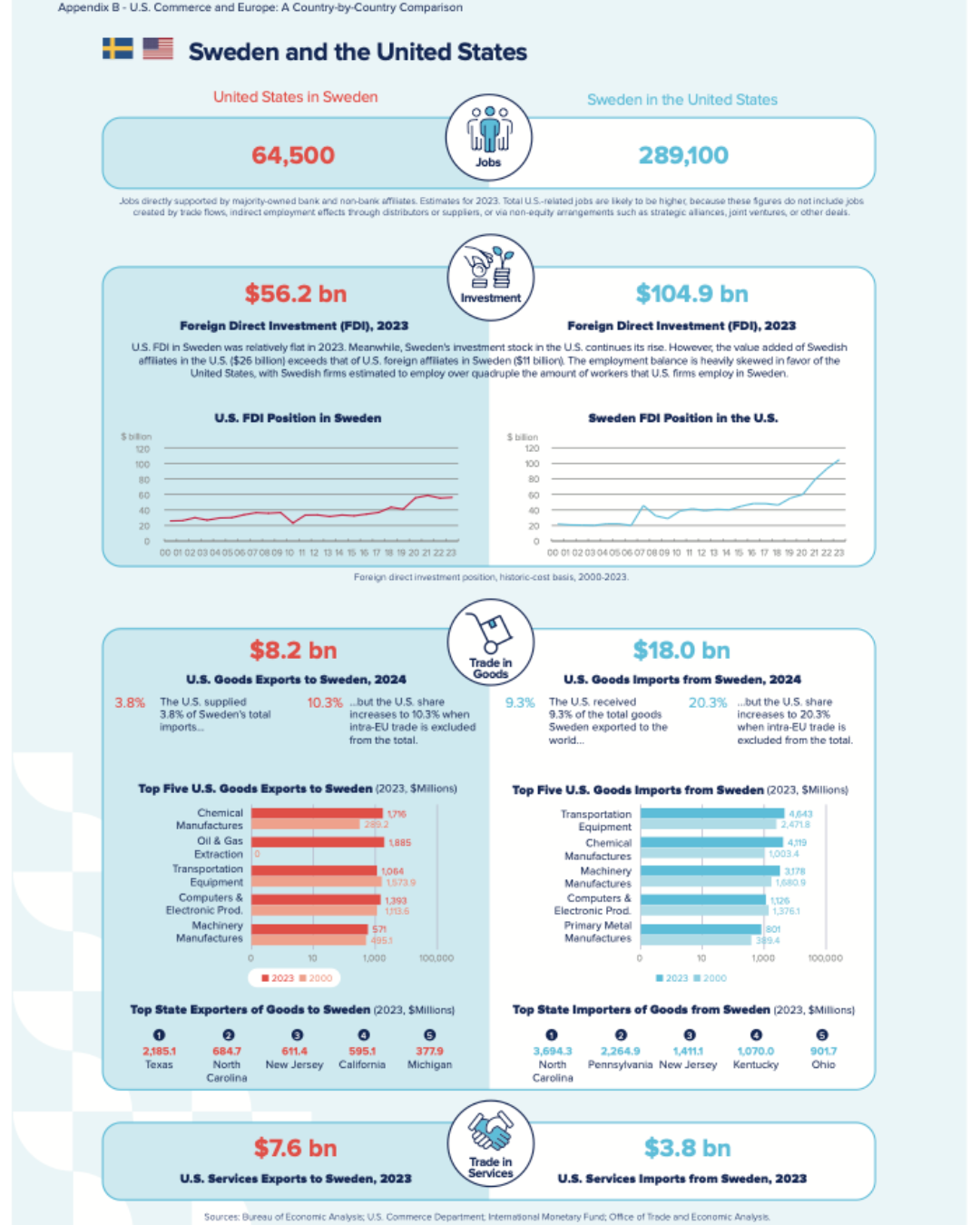The Transatlantic Economy
The Transatlantic Economy 2025 presents the most up-to-date facts and figures about the economic relationship between Europe and the United States. The research was conducted independently by Daniel S. Hamilton and Joseph P. Quinlan at the Foreign Policy Institute at Johns Hopkins University’s School of Advanced International Studies and the Transatlantic Leadership Network. The study includes dedicated profiles for 30+ European countries and all U.S. states.
2024 was record-breaking on multiple fronts:
The U.S. received 9.3% of the total goods Sweden exported to the world.
The U.S. supplied 3.8% of Sweden’s total imports.
Sweden FDI in the U.S. is $104.9 billion.
$7.9 billion U.S. services exports to Sweden.
The U.S. imports $4.64 billion worth of transportation goods from Sweden.
In 2024, U.S. goods exports to Sweden were $8.2 billion, and U.S. good imports from Sweden were $18.0 billion.
U.S. goods trade with Europe broadly defined with $1.3 trillion in 2024. Most of that consisted of U.S. goods trade with the EU+UK of $1.1 trillion. U.S. goods exports to Europe reached a record high of $504 billion, and U.S. goods imports from Europe a record $771 billion.
U.S.-EU services trade totaled an estimated $475 billion in 2024, comprised of U.S. services exports of $275 billion and services imports of $200 billion, resulting in a U.S. surplus in services trade with the EU of $75 billion.
The U.S. and Europe are each other’s primary source and destination for foreign direct investment (FDI). Together they accounted for 60.3% of global inward foreign investment stock and 62.5% of outward stock in 2023.
U.S.-EU goods trade reached a record high of $976 billion in 2024, 60% higher than U.S.-China goods trade ($583 billion) and 20% higher than EU-China goods trade ($786 billion).
The Transatlantic Economy 2025 offers key and often counterintuitive insights into the role of the United States and Europe in the global economy that have important implications for policymakers, business leaders, and local officials.



